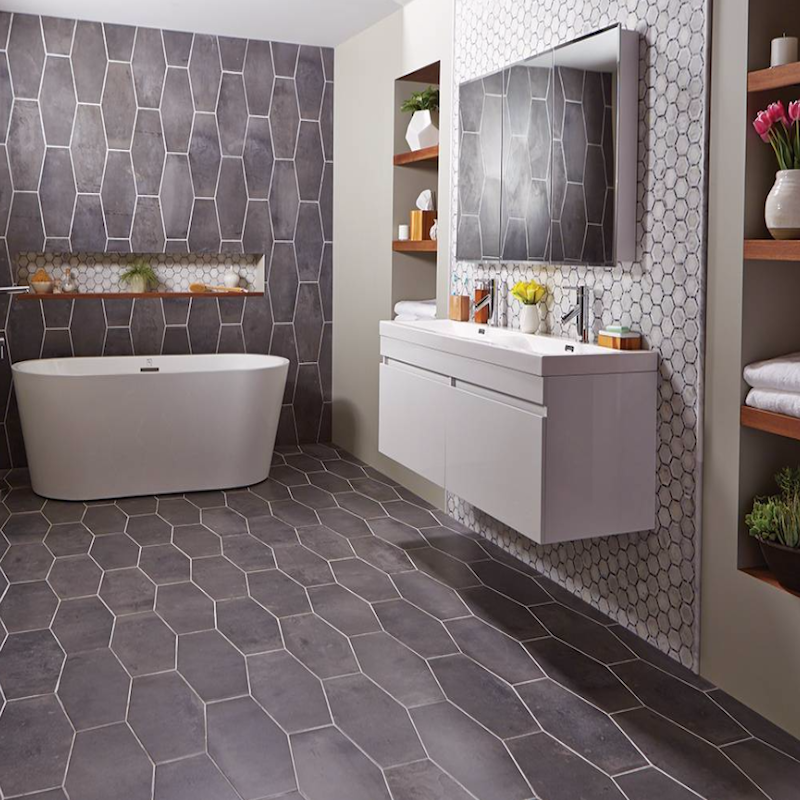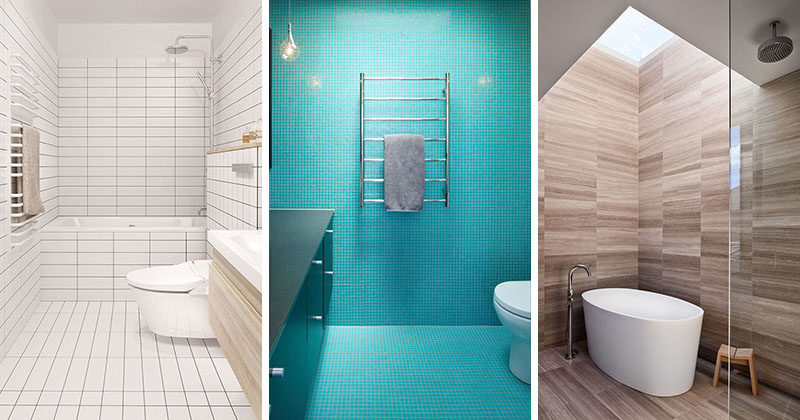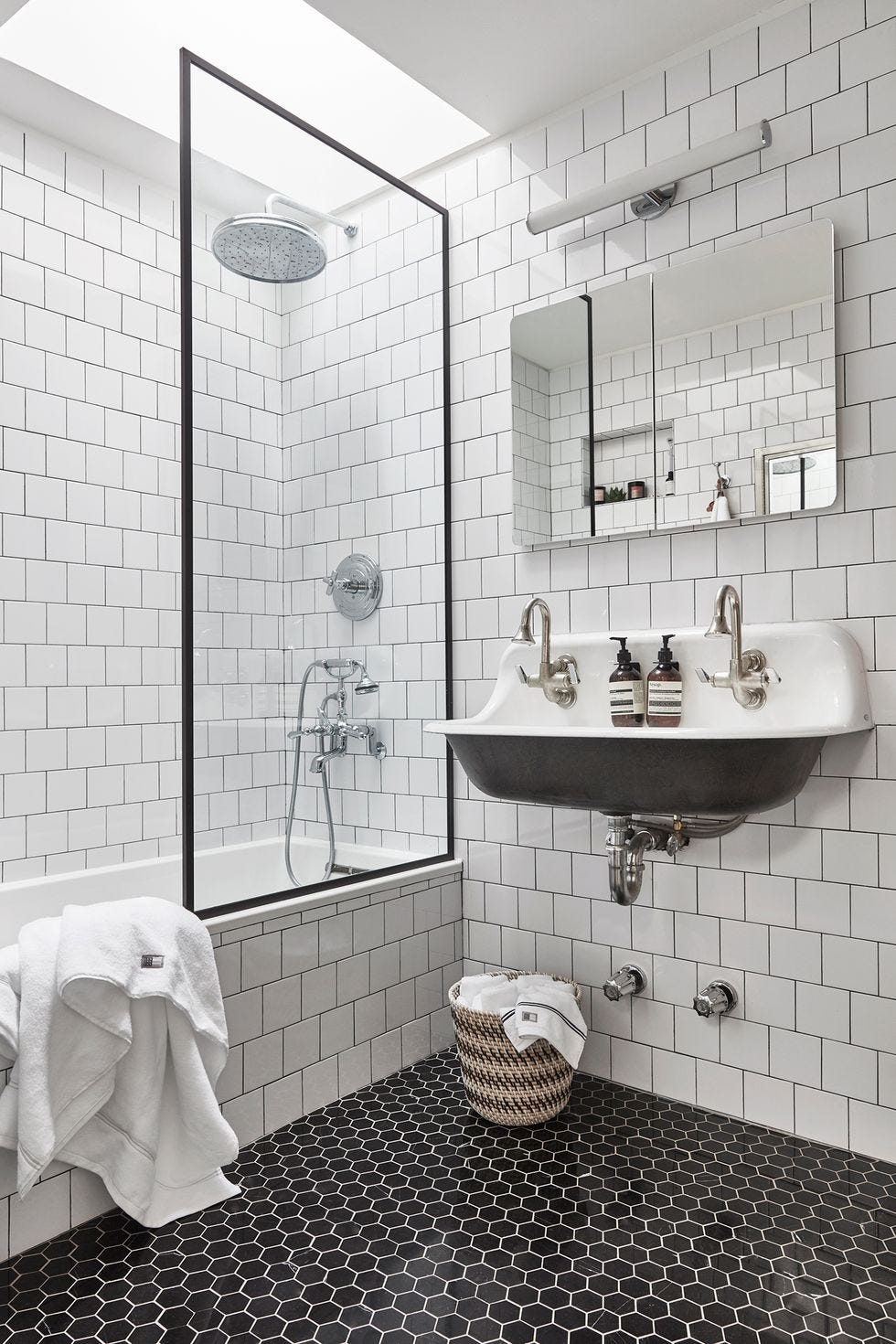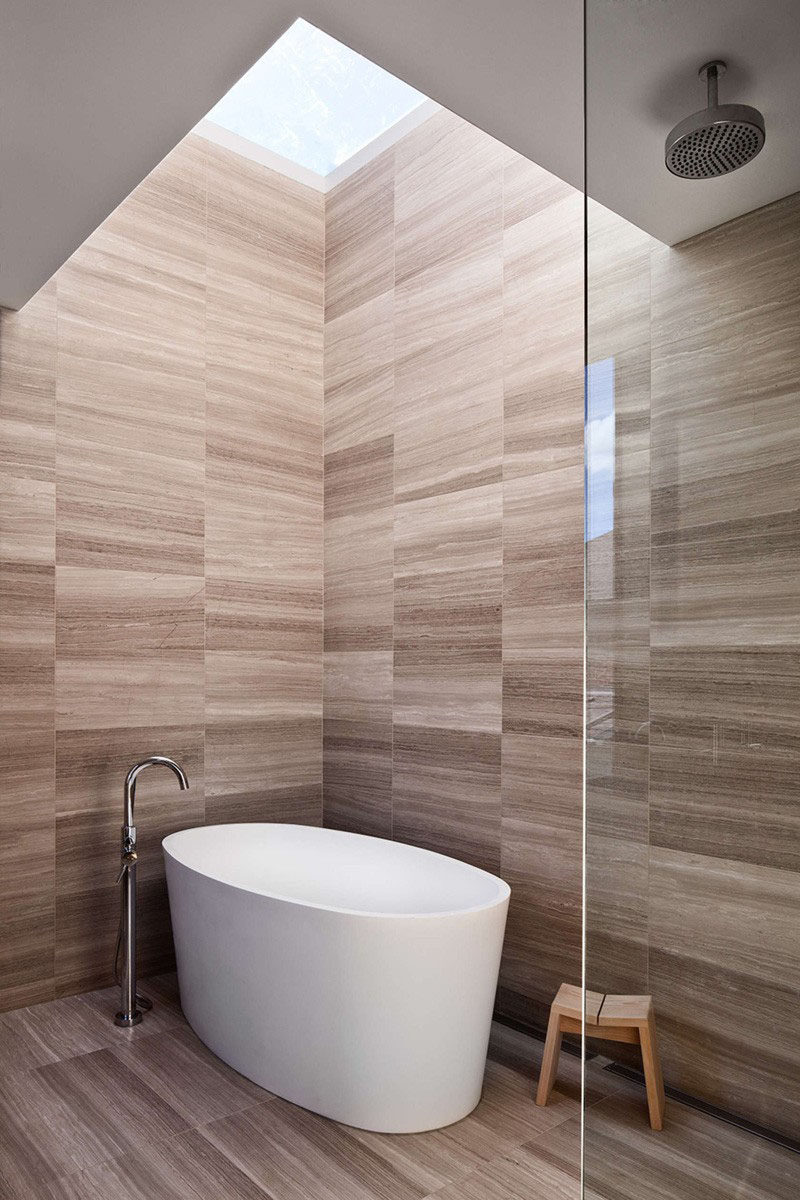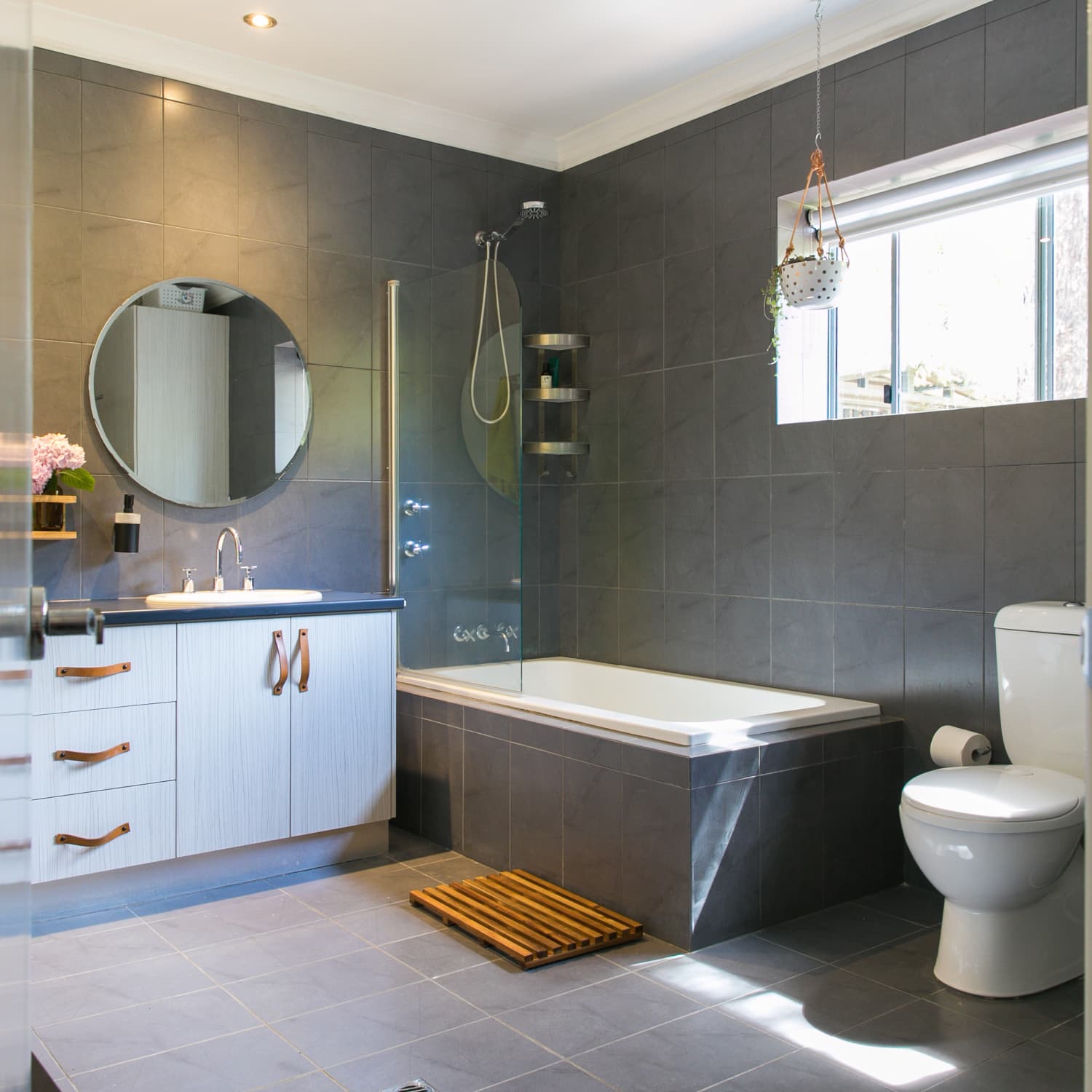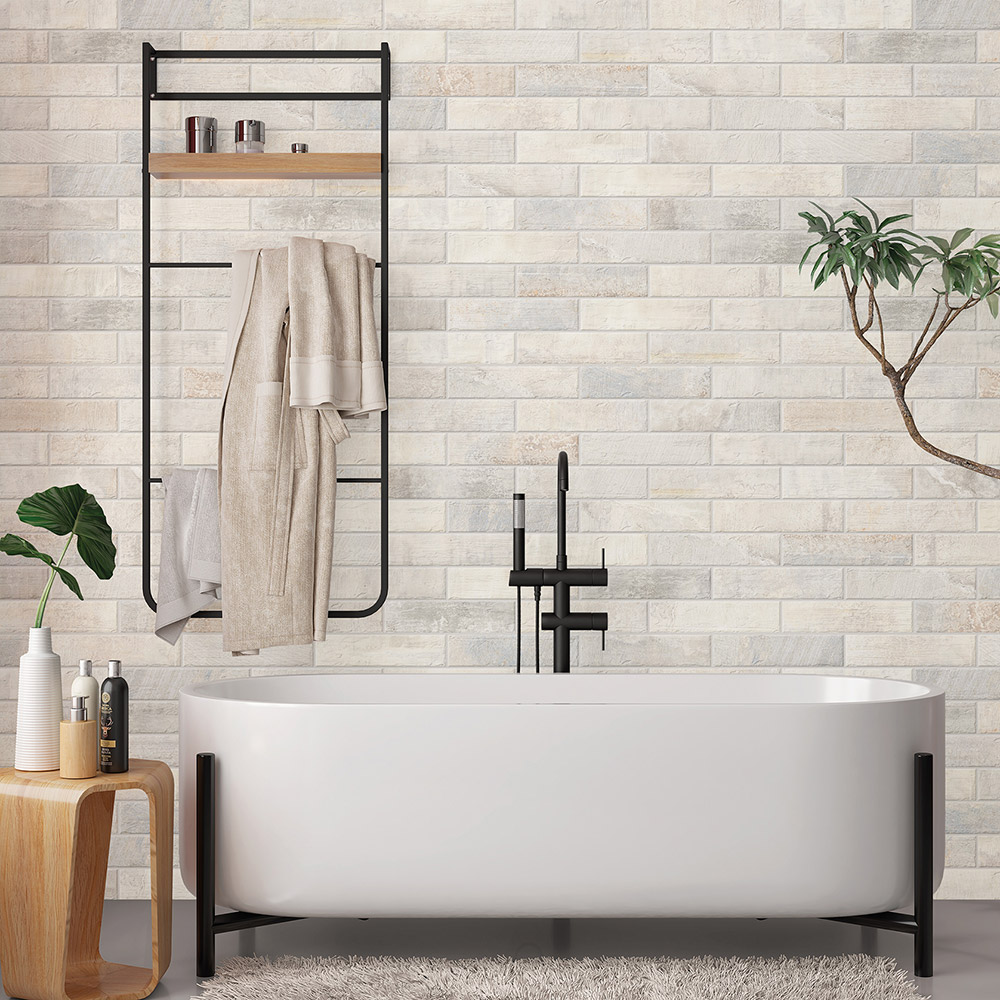Bathroom Tiles For Floor And Walls
Choosing the Right Bathroom Tiles
When it comes to choosing bathroom tiles, there are numerous options available in terms of materials and durability. Each material has its own unique characteristics and benefits. Let’s talk about the different types of bathroom tiles and provide a comprehensive guide to help you make an informed decision.
- Ceramic Tiles: Ceramic tiles are a popular choice for bathroom floors and walls due to their affordability and versatility. They come in a wide range of colors, patterns, and textures, allowing you to achieve various design aesthetics. Ceramic tiles are also durable and resistant to moisture, making them suitable for bathrooms.
- Porcelain Tiles: Porcelain tiles are known for their exceptional durability and water resistance. They are made from dense clay fired at high temperatures, resulting in a hard and dense tile surface. Porcelain tiles are available in a vast array of designs, including marble and stone replicas, making them an excellent choice for both floor and wall applications.
- Natural Stone Tiles: If you’re looking to add a touch of luxury and elegance to your bathroom, natural stone tiles are a great option. Materials such as marble, granite, and travertine offer unmatched beauty and unique patterns. However, it’s important to note that natural stone tiles require regular sealing and maintenance to prevent staining and water damage.
- Glass Tiles: Glass tiles are a modern and stylish choice for bathroom walls and backsplashes. They come in a variety of colors and finishes, allowing you to create a vibrant and eye-catching look. Glass tiles are non-porous, making them resistant to moisture and easy to clean. However, they may not be suitable for high-traffic areas or bathroom floors due to their smooth and slippery surface.
- Vinyl Tiles: Vinyl tiles are a budget-friendly and practical option for bathroom flooring. They are available in a wide range of designs, including wood and stone replicas, offering a versatile and affordable alternative. Vinyl tiles are water-resistant, easy to install, and require minimal maintenance, making them a popular choice for DIY enthusiasts.
Styling Your Bathroom with Tiles
Tiles play a crucial role in transforming the overall look and feel of your bathroom. With the wide range of design options available today, you can create a bathroom that reflects your personal style and preferences. We will explore some of the latest trends and design ideas for styling your bathroom with tiles.
Geometric Patterns: Geometric tiles have gained popularity in recent years due to their ability to add visual interest and depth to any bathroom. Consider using hexagonal, herringbone, or chevron patterns to create a unique and modern look. These patterns can be applied to both the floor and walls, adding a touch of sophistication and elegance.
Subway Tiles: Subway tiles are a timeless classic that never goes out of style. They are known for their simplicity and versatility, making them suitable for various design aesthetics. Whether you prefer a traditional or contemporary look, subway tiles can be arranged in different layouts, such as stacked or offset, to create a distinct visual impact.
Mosaic Tiles: Mosaic tiles are a great option for adding texture and color to your bathroom. They are available in a wide range of materials, including glass, ceramic, and natural stone, allowing you to create intricate patterns and designs. Mosaic tiles can be used as a feature wall, backsplash, or even as accents to highlight specific areas of your bathroom.
Large Format Tiles: If you want to make a bold statement in your bathroom, consider using large format tiles. These oversized tiles create a seamless and clean look, making the space appear larger and more open. Large format tiles are available in a variety of finishes, including matte and polished, giving you the flexibility to achieve your desired aesthetic.
Mixed Material Tiles: Mixing different materials and textures can add visual interest and create a unique focal point in your bathroom. Combine tiles with wood, metal, or even concrete to add depth and contrast. For example, you can use wood-look tiles on the floor and pair them with subway tiles on the walls to create a warm and inviting ambiance.
Slip Resistance and Waterproofing Factors to Consider
When selecting floor tiles for your bathroom, it’s crucial to prioritize slip resistance and waterproofing. The bathroom is a high-moisture area, and the floor is prone to becoming wet and slippery. We will discuss the essential factors to consider when choosing floor tiles that provide both safety and durability.
Slip Resistance: The slip resistance of floor tiles is measured using a coefficient of friction (COF) rating. Tiles with a higher COF rating offer better traction and are less likely to cause slips and falls, especially when wet. Look for tiles with a COF rating of 0.5 or higher, as they provide a safer surface for bathroom floors.
Texture: The texture of the tile surface also plays a significant role in slip resistance. Opt for tiles with a slightly textured or matte finish, as these provide better grip compared to smooth and glossy tiles. However, be cautious not to choose tiles that are too rough, as they can be challenging to clean.
Waterproofing: Bathroom floors are constantly exposed to water, so it’s essential to choose tiles that are waterproof and resistant to moisture. Porcelain and ceramic tiles are excellent options, as they have low water absorption rates. Make sure the tiles are properly sealed during installation to prevent water from seeping through the grout lines and causing damage to the subfloor.
Grout Lines: The size and spacing of grout lines can affect the overall slip resistance of the floor. Larger grout lines provide better traction, as they create a textured surface. Additionally, consider using grout with an anti-mold and anti-mildew additive to prevent the growth of bacteria and maintain a hygienic environment.
Maintenance: It’s crucial to choose floor tiles that are easy to clean and maintain. Smooth and non-porous tiles, such as porcelain and ceramic, are resistant to staining and require minimal upkeep. Avoid porous materials like natural stone or unglazed tiles, as they may absorb water and become more challenging to clean over time.
Enhancing Aesthetics and Creating Visual Impact
Wall tiles are an integral part of bathroom design, as they can enhance the aesthetics and create a visual impact. Whether you prefer a minimalist and contemporary look or a bold and vibrant design, the right wall tiles can transform your bathroom into a luxurious sanctuary. Let’s explore different types of wall tiles and how they can elevate the overall appeal of your bathroom.
Subway Tiles: Subway tiles are a timeless choice for bathroom walls, known for their simplicity and versatility. They are rectangular in shape and can be arranged in various patterns, such as stacked or offset, to create different visual effects. Subway tiles are available in a wide range of colors, sizes, and finishes, allowing you to achieve your desired design aesthetic.
Patterned Tiles: If you want to add a touch of personality and uniqueness to your bathroom, consider using patterned tiles on the walls. These tiles feature intricate designs and motifs, such as Moroccan or geometric patterns, adding visual interest and creating a focal point. Patterned tiles can be used sparingly as accents or applied to an entire wall for a bold statement.
Textured Tiles: Textured wall tiles can add depth and dimension to your bathroom. They come in various finishes, such as 3D, raised, or embossed patterns, creating a tactile and visually appealing surface. Textured tiles are especially effective in creating a focal point or accent wall, adding a touch of luxury and sophistication to your bathroom.
Mosaic Tiles: Mosaic tiles are a popular choice for creating intricate and eye-catching patterns on bathroom walls. They are available in a wide range of materials, including glass, ceramic, and natural stone, offering endless design possibilities. Mosaic tiles can be used to create feature walls, borders, or even as accents to highlight specific areas of your bathroom.
Large Format Tiles: Large format tiles on bathroom walls can create a seamless and clean look, making the space appear larger and more open. They eliminate the need for excessive grout lines and provide a sleek and modern aesthetic. Large format tiles are available in various finishes, such as matte or polished, allowing you to achieve your desired design style.
Maintenance and Cleaning Tips for Bathroom Tiles
Proper maintenance and cleaning of bathroom tiles are essential to keep them looking pristine and hygienic. Over time, tiles can accumulate dirt, grime, and soap scum, which can dull their appearance and create a breeding ground for bacteria. Follow these tips and techniques for maintaining and cleaning your bathroom tiles to ensure they stay in top condition.
Regular Cleaning Routine: Establishing a regular cleaning routine is crucial for keeping your bathroom tiles clean and hygienic. Make it a habit to wipe down the tiles after each use with a mild cleaning solution and a non-abrasive sponge or cloth. This will help prevent the buildup of soap scum and grime and reduce the need for more intensive cleaning in the future.
Use the Right Cleaning Products: It’s important to select the appropriate cleaning products that are safe for your specific type of tiles. Avoid using harsh chemicals or abrasive cleaners that can damage the surface of the tiles. Instead, opt for mild, pH-neutral cleaners or natural solutions like vinegar or baking soda. Always test any new cleaning product on a small, inconspicuous area before applying it to the entire surface.
Grout Cleaning: The grout lines between the tiles can be a magnet for dirt and grime. To keep the grout clean, regularly scrub it with a small brush or an old toothbrush using a mixture of baking soda and water or a mild grout cleaner. For stubborn stains, you can apply a paste of baking soda and hydrogen peroxide and let it sit for a few minutes before scrubbing.
Preventing Mold and Mildew: Bathrooms are prone to mold and mildew growth due to the high humidity levels. To prevent mold and mildew from forming on your tiles, ensure proper ventilation by using an exhaust fan or opening a window during and after showers. Regularly inspect the bathroom for any signs of mold or mildew and promptly address it with a mold and mildew remover.
Sealing: If you have natural stone tiles or porous tiles, it’s important to regularly seal them to protect them from moisture and staining. Apply a high-quality tile sealer according to the manufacturer’s instructions, and reapply it periodically to maintain its effectiveness. Sealing the tiles will also make them easier to clean and prevent the growth of bacteria.
Prevention Measures: Taking preventive measures can also help in maintaining the cleanliness of your bathroom tiles. Use bath mats or rugs in high-traffic areas to prevent water from splashing onto the tiles. Promptly wipe up any spills or splashes to prevent staining. Avoid using abrasive tools or harsh scrubbers that can scratch the tile surface.
Bathroom Tile Idea – Use The Same Tile On The Floors And The Walls
Matching Tile Floors and Walls in the Bathroom Apartment Therapy
bathroom tile ideas to upgrade every surface of your space
Porcelain vs. Ceramic Tiles
Related Posts:
